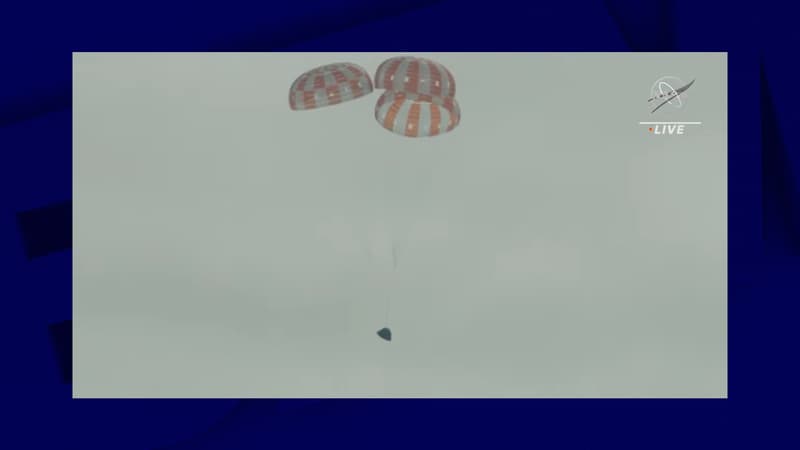A new successful step towards the reconquest of the Moon. After 25 days of flight, the Orion capsule returned to Earth without incident: it sank in the Pacific Ocean, off the coast of Mexico, at 12:40 local time (18:40 French time), one minute after delay.
This splashdown was a crucial step for NASA, which wanted to test Orion’s ability to “return safely to Earth” in a “precise landing.” It must be said that the capsule entered the atmosphere at more than 39,000 km/h, or 32 times the speed of sound.
NASA teams, accompanied by the US Navy, are in charge of recovering the ship. The US space agency stressed a “perfect landing” during its direct after the return operation.
Entering the atmosphere, a great challenge
The descent to Earth was a pivotal moment for NASA. The capsule reached 2,760°C, enough to test its heat shield. The latter is made of titanium and carbon fibers and is coated with Avcoat ablator, a material that burns in a controlled manner at high temperatures.
If the material was already used during the Apollo mission, here it is thinner and larger. Therefore, the risks of complications were high, despite extensive prior testing. Therefore, the NASA teams held their breath when Orion entered the atmosphere.
NASA has also inaugurated a new technique for entering the atmosphere: during its descent, Orion regained some altitude to exit the atmosphere before plunging back towards Earth. Thanks to this, the landing could be more precise.
More than 2 million kilometers traveled
As part of the Artemis 1 mission, the Orion capsule lifted off aboard the SLS at 5:47 p.m. on November 16, after a launch that was postponed several times. In total, he spent 25 days, 10 hours and 54 minutes in space, where he traveled more than 2 million kilometers.
Orion marks the start of numerous tests ahead of the Artemis II mission, which aims to send the first woman to our natural satellite by 2025.
“This is a mission that will allow us to do what has never been done before and teach us what we don’t know,” Mike Sarafin, Artemis 1 mission manager, stated before the capsule’s launch.
By opening the door to Artemis II, this experience should also prepare for the first manned flight to Marchscheduled for the late 2030s.
Source: BFM TV


